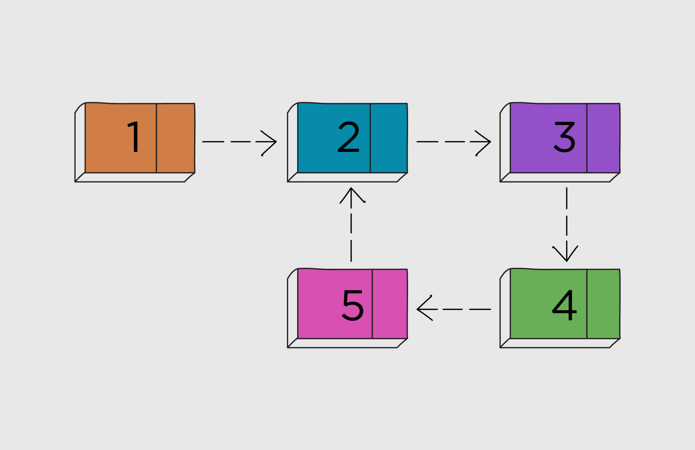Sometimes interview questions come with some twist like
Solve this problem without using any loops
So today I will explain how to solve general input/output (i/o) with test cases problem where special rule defines as saying “Do not use any Loop statement”. We’re going to solve this in Golang. When this type of problem was asked by the interviewer, the first thing that came to our mind(especially those who didn’t solve lots of problem-solving in his/her school/university life). The problem statement is given below that we will try to solve the problem without using any loop.
Note: This problem can be solved differently or different recursive implementation can be applied too.
Problem Statement
– We want you to calculate the sum of squares of given integers, excluding any negatives.
– The first line of the input will be an integer N (1 <= N <= 100), indicating the number of test cases to follow.
– Each of the test cases will consist of a line with an integer X (0 < X <= 100), followed by another line consisting of X number of space-separated integers Yn(-100 <= Yn<= 100).
– For each test case, calculate the sum of squares of the integers, excluding any negatives, and print the calculated sum in the output.
Note 1: Do not put blank lines between test case solutions.
Note 2: Take input from standard input and output to standard output.
Rules
– Do not use any Loop statement
– You may only use standard library packages
– There should be no output until all the input has been received.
Solution
Defining Main & standard library packages
package main import "fmt"
Defining a global variable for storing results
var result []int
Defining main function
func main() {
var testCaseNum int
fmt.Scanln(&testCaseNum)
nTestCase(0, testCaseNum)
}
Recursively taking inputs using ReadN
Note: The function will finish when the test case and index value become equal and we’re printing the result array recursively using PrintN as Golang doesn’t have any built-in functions which print array without any loop (to my knowledge at least).
func nTestCase(idx int, testCase int) {
if idx == testCase {
PrintN(result, 0)
return
}
var n int
fmt.Scanln(&n)
all := make([]int, n)
ReadN(all, 0, n) // reading array elements
result = append(result, sumOfSquare(all, 0, n))
nTestCase(idx + 1, testCase)
}
Calculating sum of squares of given integers, excluding any negatives.
func sumOfSquare(values []int, idx int, arrayLen int) int {
if idx == arrayLen {
return 0
}
if values[idx] > 0 { // ignoring negative numbers in the array
return values[idx] * values[idx] + sumOfSquare(values, idx + 1, arrayLen)
}
return sumOfSquare(values, idx + 1, arrayLen)
}
Reading integer array inputs recursively
func ReadN(all []int, idx, n int) {
if n == 0 {
return
}
if m, err := fmt.Scan(&all[idx]); m != 1 {
panic(err)
}
ReadN(all, idx+1, n-1)
}
Outputting result integer array recursively
func PrintN(values []int, idx int) {
if len(values) == idx {
return
}
fmt.Println(values[idx])
PrintN(values, idx + 1)
}
In conclusion, When we saw this type of problem for the first time, we thought it’s easy problem until we read the line Do not use any Loop statement in your solution and the problem becomes hard for newbie or not too much experience on problem-solving.
You can read our other blog posts Here
So now we all know how to tackle this type of problem. Stay tuned for our next blog post. Thank you.
















